DeLorean Time Machine – The “A” Car
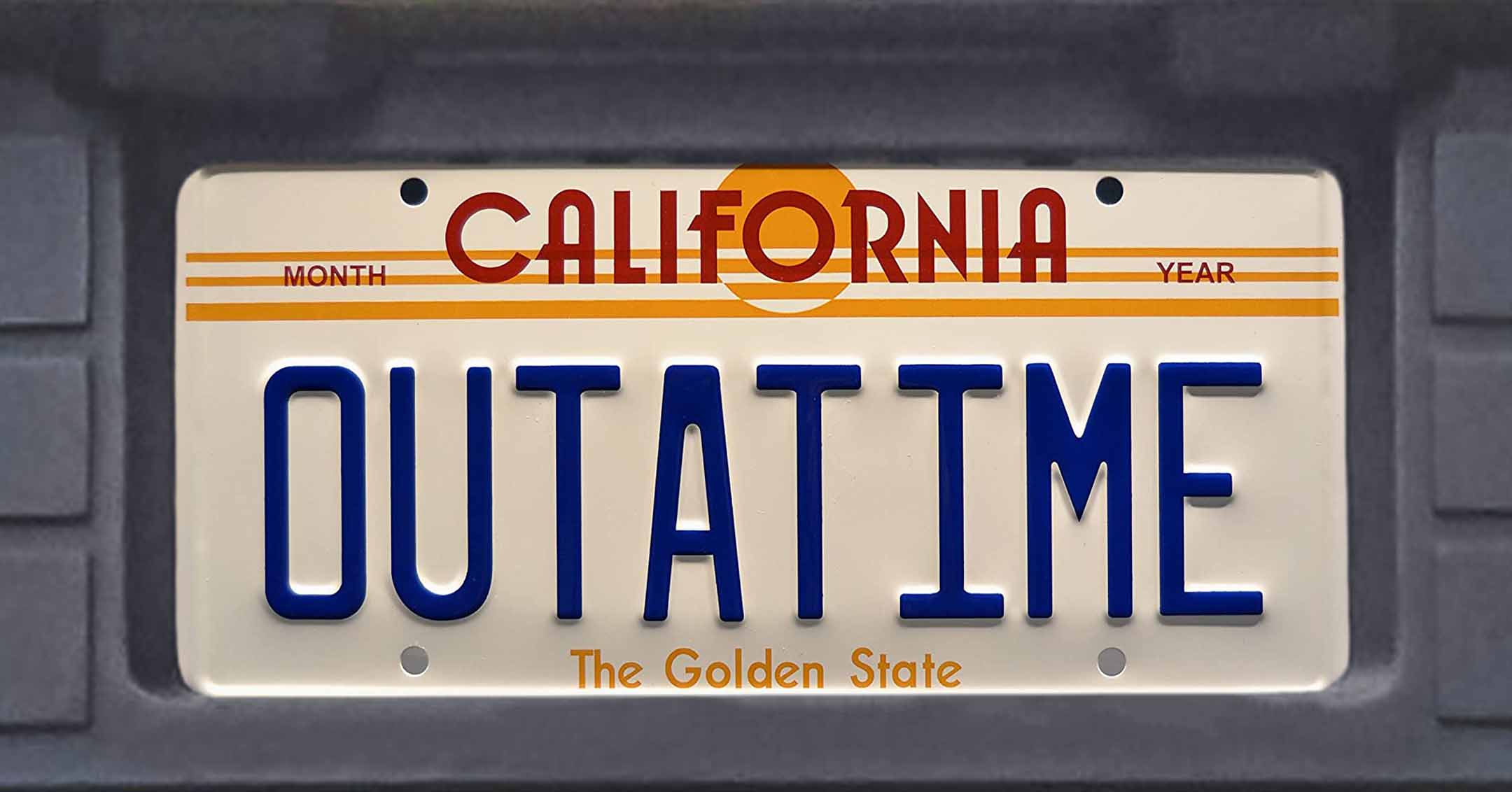
by Steve Concotelli This vehicle is the original DeLorean Time Machine immortalized on screen in the Back to the Future trilogy. It’s widely considered to be the most famous movie car in the world. This particular car began its life as a stock DeLorean manufactured in October of 1981. Two years later, in 1983, Universal Studios purchased the car from a private owner, to be converted into Doc Brown’s Time Machine. The design of the Time Machine was based on drawings by artists Ron Cobb and Andrew Probert. Over the course of 10 weeks, the The Time Machine components were built and assembled by Kevin Pike and his team at Filmtrix. Michael Scheffe served as the Construction Coordinator on the project. He was responsible for acquiring pieces for the vehicle and supervising the construction. Scheffe also designed several components on the Time Machine, including Mr. Fusion. Once completed, the vehicle received the designation of the “A” Car or “Hero” car – due to the fact that this vehicle was the first Time Machine built for Universal. It was also the most detailed, both inside and out. Two other Time Machines were also built for Back to the Future, including a stunt car (designated the “B” Car) and a process car (the “C” Car) that was cut in half, in order to film inside the vehicle. While all of the Time Machines were meant to be identical – there were differences between the vehicles. Most notable were the Time Circuits. Originally, all three vehicles had Time Circuits with numeric-only displays. So, the date October 26, 1985 read 10-26-1985. However, Bob Zemeckis and Bob Gale felt that a row of numbers made it too difficult for the audience to read. Since production was already underway, the Special Effects team quickly changed the “B” and “C” Car Time Circuits to alphanumeric displays. So October 26,1985 reads OCT-26-1985. These are the Time Circuits fans are familiar with. However, since the “A” Car wouldn’t be used for interior close-ups, they didn’t swap out the Time Circuits in that vehicle. So, the Time Circuits in the “A” Car are technically wrong! You can see the “A” Car’s numeric Time Circuits in several shots when Einstein is sitting in the car during the Twin Pines Mall scene. The “A” Car received the most screen time in Back to the Future and was used for all the beauty shots in the film, including the iconic shot of the Time Machine rolling out of Doc Brown’s truck. The “A” Car was also used extensively in Back to the Future Part 2 and Part 3. It also appeared on camera for the Huey Lewis “Power of Love” video, as well as Back to the Future the Animated Series and Secrets of the Back to the Future Trilogy with Kirk Cameron. After the trilogy, the “A” Car served as a tourist attraction at Universal Studios Hollywood. Sometimes, it was displayed in front of Back to the Future: The Ride. Other times, Doc Brown character actors drove the vehicle through the park as they interacted with guests. Through the years, thousands of fans had their picture taken next to the car, in the car, or sometimes even sitting on the car. When Doc wasn’t using the car, it was often kept on the backlot – unlocked, with the keys in the ignition. There are reports that several fans discovered this fact and made their way onto the Universal backlot. There, they were able to locate the Time Machine, open it up and start it up. To make matters worse, some fans who desired a souvenir went so far as to steal pieces off the car. Over time, many of the most iconic pieces went missing, including Mr. Fusion, the Time Circuits and the Flux Capacitor. As a movie prop, the Time Machine was built to look good on camera – not to be long lasting. Many of the pieces used to build the Time Machine were fragile – being made of glass, neon, and wood. Unfortunately, the Time Machine was not able to withstand the daily barrage of park guests poking, pulling, touching, and prodding the vehicle. Many pieces on the car were broken or damaged as a result. Adding to the car’s problems was the weather. When the car wasn’t in use, it was parked outside – where sun and rain caused significant damage to the fragile Time Machine pieces, as well as the vehicle itself. Holes drilled throughout the car’s panels allowed water and moisture to get inside. The back window had also been removed to make room for the Time Machine components – which meant the car was no longer waterproof. When it rained, the water found its way into the bulkhead, wreaking havoc on the car’s electrical systems. Throughout the years, Universal’s transportation team worked to keep the vehicle running. While they did attempt to repair the Time Machine components, accuracy was not a major consideration. Pieces were altered or put back on the car incorrectly. A pair of stereo speakers were added to the pontoons, allowing the car to blast music wherever it went. The rear vents, originally painted with heat and oil splatter effects, were inaccurately painted black. While the “A” Car suffered, the other screen used Time Machines fared even worse. The “B” Car was destroyed by the train at the end of Back to the Future Part 3. The “C” Car was eventually disposed of. This meant that the “A” Car was the only original Time Machine left from the first film – adding to its significance. As the years passed, the condition of the car deteriorated to the point where the vehicle no longer functioned. At that point, Universal put the car on permanent display along the tram route, along with several other picture cars. A large tarp structure was built to help protect the vehicles from the elements. But by that point, it was too late. Birds, mice and cats had
Social Media for DeLorean Clubs

After having conversations with a few DeLorean club/organization group leaders, I was prompted to restructure how the Orange County DeLorean Club’s social media is setup. Mainly, to distinguish the difference between a “Public Page” vs. a “Closed Group” on Facebook. Facebook has three main user formats: There are also three main distinctions for groups. They can be public, closed, or secret. The OCDC has two Facebook formats, a public page and a closed group. The main reason for having a closely restricted, closed group, is to foster discussion and communication among those who are involved with the local group. On rare occasions, DeLorean owners outside of Orange County are added to the group, but again, this is rare. By keeping the closed group limited only to people who live in Orange County, AND who own a DeLorean, the expectation and hope is that the local community can build up a trust and relationship with each other. Lastly, the Orange County DeLorean Club has a mailing list that anyone is encouraged to join. Almost all of the emails will be related to local events and gatherings, so those outside of the area may get bored with the content… but they may also get ideas for their local DeLorean clubs/groups. I hope this article can help other DeLorean clubs and groups around the world figure out how to best serve their local community. Driving a DeLorean is fun – but it’s SO MUCH MORE FUN when you get together with other DeLoreans.
Sonax Wheel Cleaner Plus is Magic on DeLorean Rims
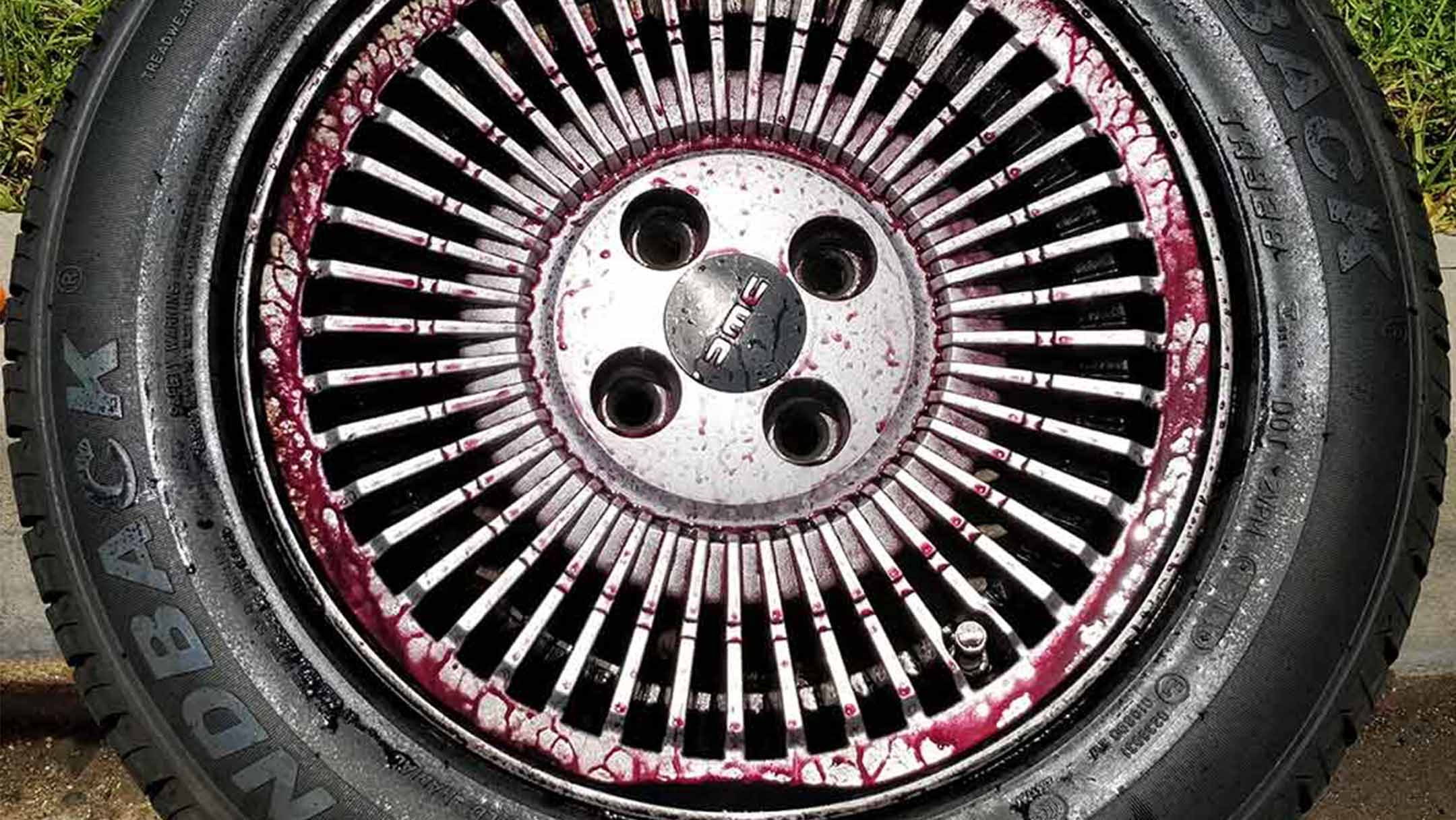
Sonax Wheel Cleaner Plus is magic! Well, it’s magic for any DeLorean owner who has ever spent hours with rags and tooth brushes trying to clean between every fin of the DeLorean rims. Why is it magic? With very little effort, 98% of the brake dust that gets caked onto the rims comes off, leaving them surprisingly clean. With a few sprays of the bottle, a few minutes of waiting, and a hose, your rims can look pretty amazing. And if you want to get that last 2%, break out the brush and the remaining brake dust comes off easily. We used a home pressure-washer when cleaning off the Sonax, but many people on YouTube who recommend Sonax use hoses. We took all four rims off the car to install DeLorean Go’s Brake Dust Shields, so figured we’d ‘super-clean’ the rims – outside and inside. The Sonax did an amazing job cleaning the inside, which had decades of baked-on, caked-on brake dust. (Who ever cleans the INSIDE of the rims… other than Col Bennett?) We did try a large scrub brush for a minute while cleaning the inside, but it didn’t seem to do any better than the pressure-washer. Check out the before-and-after photos below. The instructions specifically say to spray the rims when they are cool and DRY. Do NOT wet them first. Within a few moments of spraying a dry rim, you’ll see the liquid turn a deep purple and start dripping down the rim. As most of us know, in order to get into the nooks-and-crannies of the fins, you need to get some weird angles. Of course, taking the rim off the car made it much easier. And I would say, don’t be shy when spraying. Get a good coat of the liquid on the rim. The instructions then say to wait 2-4 minutes before hosing it off. Another interesting note – Sonax is acid-free! Which means it won’t damage your rims. As of this writing, Sonax Wheel Cleaner Plus is about $18 for a 16.9 oz. bottle. Based on our usage, I estimate that one bottle will clean (just the ‘outside’) all four rims, two times. Check out the photos and video if your skeptical – then gamble $20 on buying a bottle and give it a try – THEN, share your comments below.
The ‘Gold-plated’ DeLoreans
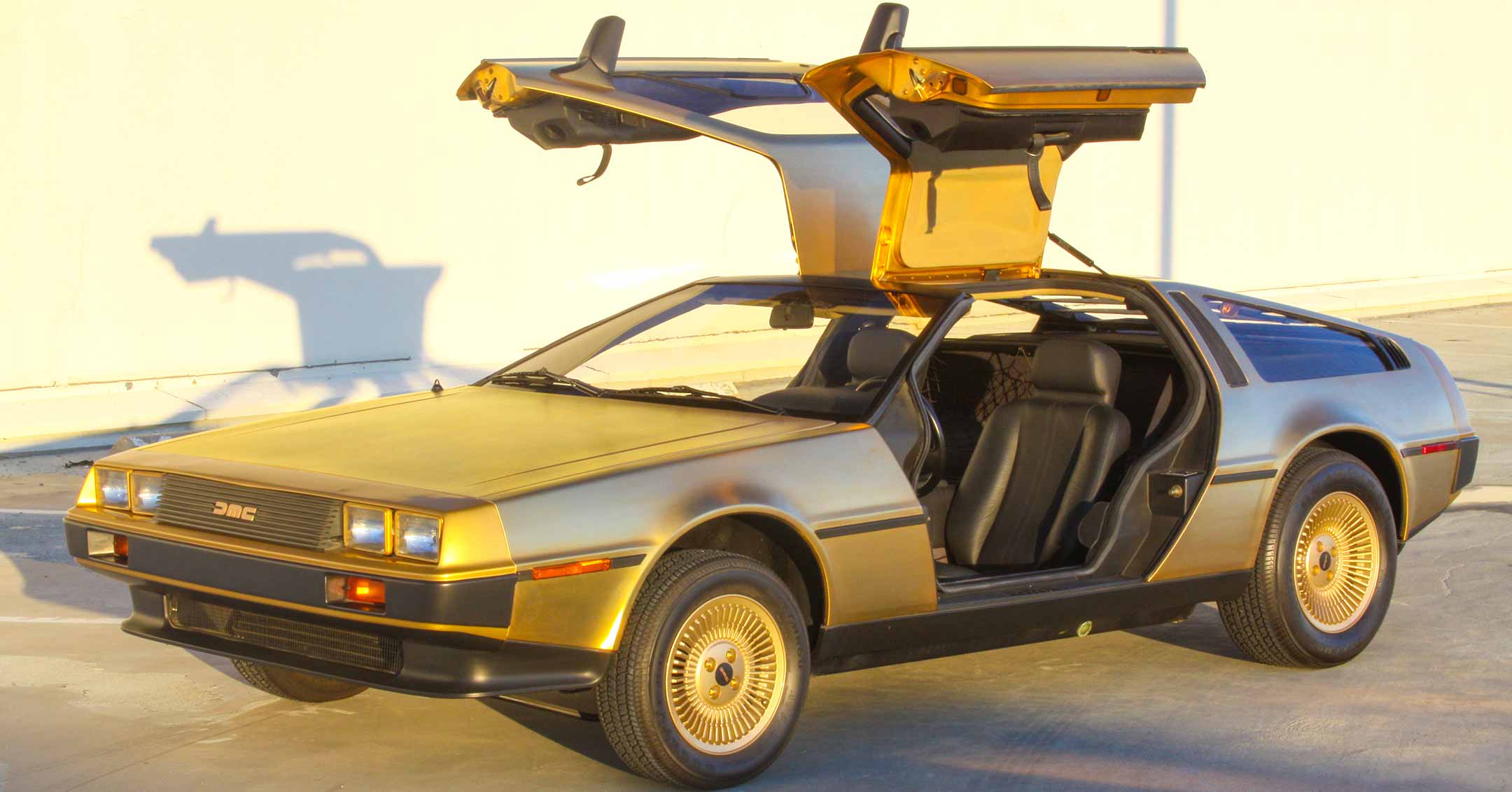
by Barrie Wills, with acknowledgements to Stuart Craven, Nick Sutton‘s book The DeLorean Story, the Sunday Times newspaper, and the DeLorean Motor Company website. In the fall of 1980, John Z. DeLorean was in Dunmurry for one of his ‘in and out’ day visits, and all seemed quiet, as everything at this stage by our standards, seemed to be going reasonably smoothly. Everyone in the company was working flat out. The peace was broken when director of manufacturing George Broomfield, director of engineering administration and quality, Mike Loasby and I were asked to join John Z and managing director Charles K. Bennington in the boardroom. We arrived with hastily written crib sheets, from which we could update the chairman on our respective progress. John Z was at his most convivial when we opened the conference room door and filed in. He went straight to the point and told us the American Express Christmas Mail Order Catalogue had the largest circulation of any across the US. How interesting, I recall thinking. He went on to astonish us all by announcing he had finalized a deal for its front cover to feature a picture of a gold DMC-12. That’s good, we thought. Then came the punchline: ‘ … and inside we will be offering to sell 100 24-carat gold-plated cars at $85,000 each to the first comers.’ We stared at each other in disbelief. It was not as if we hadn’t enough to do, without a side issue of this magnitude to account for. But this was for real, even though New York-based DeLorean PR chief Mike Knepper thought the idea came from John Z’s interior decorator Maur Dubin. John Z was not joking – the deal was done. The cars were to be delivered to the lucky buyers by October 1981. My mind went back to my youth. I had grown up at the bottom of the hill leading to the Daimler factory in Radford, Coventry. I remembered the ‘jungle drums’ doing the rounds when I was about 13. Somehow, we local urchins got to know when the chairman of Daimler’s wife, Lady Norah Docker, was about to appear in her Daimler DK400 Coupe, complete with seats trimmed in natural zebra hide and gold-plated bright body fittings. We would congregate until it passed us. That car’s components were only 14-carat gold. Cheapskate! Once the three of us had left the boardroom, we all agreed no one would be crazy enough to buy one. So we could get on with the job and wait for it to go away. But it didn’t. By the Spring of 1981 we were shocked to learn from John Z that two cars had been ordered – not 100, fortunately. In a way though two were as big a problem as would 100 have been as no-one had a clue whether stainless steel could be gold-plated successfully. We also learned the front and rear fascias and road wheels were to be painted a ‘matching’ gold colour, and that specially-designed exhaust tips manufactured by trusted supplier Prescott Powell, wheel nuts, door hinges, rivets for the door seals, other visual small metal pressings, and the aluminium front DMC logo were required to be gold-plated too. Knowing it had been impossible to match a silver painted fascia with the normal grained stainless steel, an ‘executive decision’ was made to ask the fascia supplier Phoenix to paint three (including a spare set of course) to an acceptable contrast in line with the policy adopted for production cars. A deal was also negotiated with GKN Alloys for the painting of three sets of road wheels to a ‘gold’ colour to compliment the plated skin panels. As the gold-plating of the grade 304 stainless steel was to be the most demanding element of the process, after I consulted with production purchasing manager Nick Sutton in the Coventry office, senior buyer Stuart Craven, the most technically-qualified of the Coventry purchasing team, was given the job of leading the project. He was supported by Len Nelson of quality engineering; Martin Mail, our new product planning manager; and George Fraser of material control manager Martin Graham‘s material handling team. Stuart undertook a review of gold-platers in the UK and mainland Europe, quickly finding out hardly any had the processing equipment capable of plating the size of panels in the DeLorean’s body shell. Very soon he focused his attention on the well-proven plating expertise of the large German chemical conglomerate Degussa. Degussa’s payment terms demanded the gold itself should be paid for up-front. I swallowed hard, conferred with director of finance Joe Daly and financial controller David Adams, and agreed to pay the $45,000 that represented, at the same time as Nick Sutton’s team’s order was placed. Despite their impressive facilities, a larger purpose-built plating vat was required, estimated to cost $37,000. By comparison, the plating process itself represented a meagre $15,000. In view of the number of unknowns relating to the likelihood of success, Degussa went the whole hog and asked for a total (including ancillary costs) of $131,000 up front. All for three sets of panels and door assemblies, one each for the two cars bearing a selling price premium of $60,000 each, and a third in case anything went wrong and if available – as most did – to be held as spares in Irvine, California. The only concession we managed to negotiate was that of a refund for any gold left over in the vat after plating – small mercies – and a chance perhaps to make up for the nett loss (before labour and overhead costs at Dunmurry) of $11,000. As Stuart got deeper into discussions with Degussa, it became clear they were more than sceptical about the likelihood of success. To Stuart’s shock they asked whether the plating could be carried out at Dunmurry to avoid damage to the panels after plating – with them providing the process know-how, the electrolyte solution, specialist platers and other processors. Stuart didn’t bother to
They All Look The Same… But they Aren’t
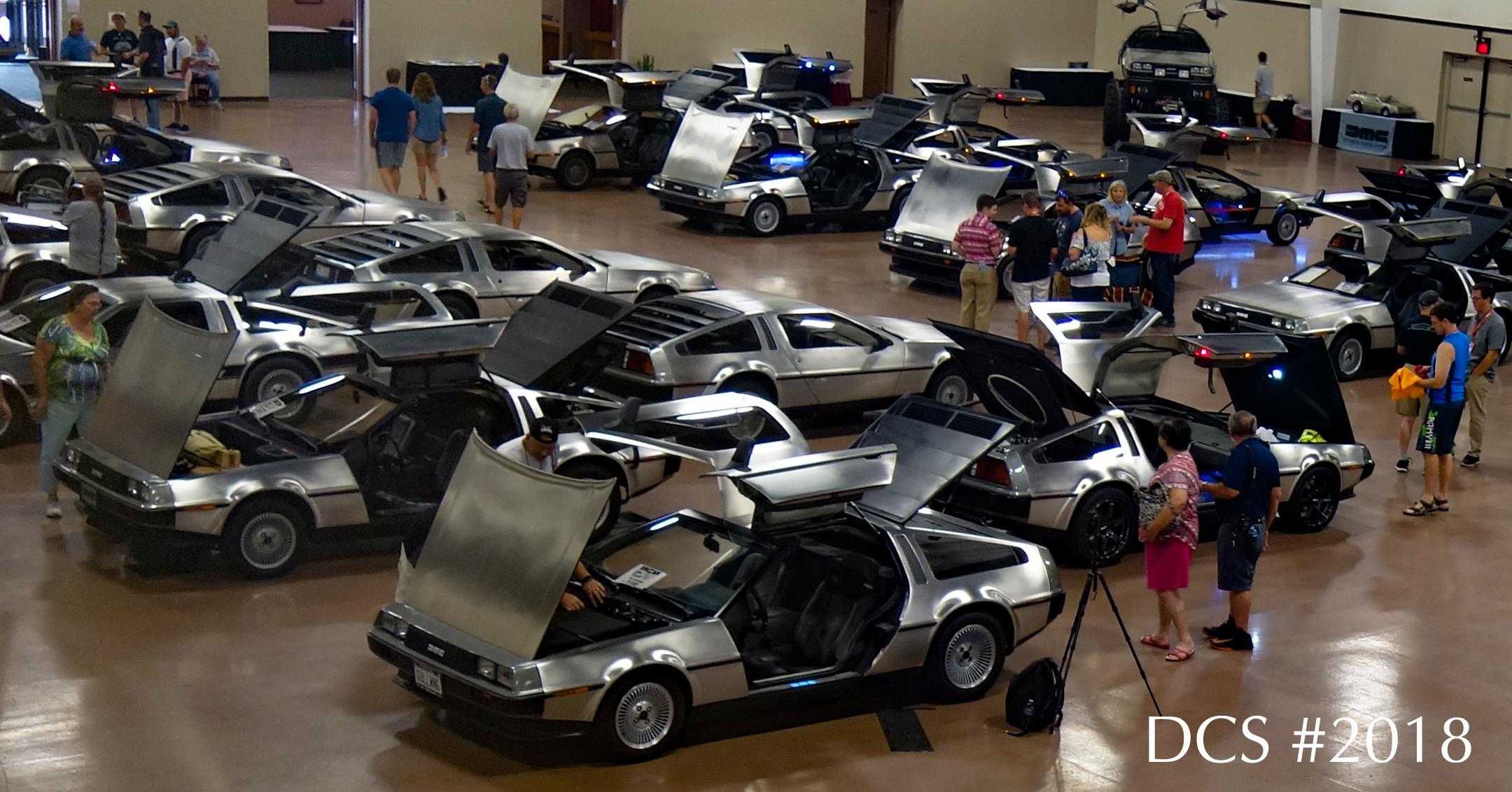
by Gordon Carpenter (DMC #10987) & Dara Solo More than 50 DeLoreans attended the 2018 DeLorean Convention and Show at Pheasant Run Resort in St. Charles Illinois. While glancing at all of these gleaming beauties, one might say ‘They All Look The Same’… But they Aren’t! I took it upon myself to find and photograph the ‘Custom’ of every DeLorean at the show, and ended up taking over 300 photos! Personalizing your DeLorean while maintaining the key design elements has always been my passion. I was happy to discover that many of the participants at the 2018 DCS have been very creative in adding their own unique touches. Here are a few that caught my attention… VIN 01115 Owner Unknown (can anyone help here?), gave 01115 an interior makeover that grabs your attention like no other. The seats have been recovered with a soft, velvety, textured material. The Binnacle, dash center console, and shift boot have all been recovered in a red vinyl. The center console instrumentation has been redesigned to include a Double DIN stereo head unit, bright stainless steel knobs to control the AC, the stock manual shift ball has been replaced with a stainless steel knob, and the ashtray has been transformed to a cup holder. Last but not least, the steering wheel and turn indicator housing were painted red to match. From any angle, this interior is beautiful! VIN 05180 Owner: Dennis Schlieckau outfitted 05180 with custom luggage from www.HillsAliveLuggage.co.uk that goes perfectly with the DeLorean styling. Dennis elected to remove the spare tire and position the first piece in the now-empty well. Then two identical primary luggage pieces, beautifully tapered to fit our unique trunk, are positioned above the circular luggage piece. Hills Alive added a snap-on bag to utilize the space opposite the gas fill protrusion. All four pieces fit perfectly in the trunk space! And there is more… Behind the two passenger seats, two more suitcases expertly fit on the parcel shelf! I estimate that Dennis and his wife could easily take a 3-week vacation and never have to visit a laundromat on their travels! VIN 10205 Owner: Matt Slaw has a great example of a fully painted DeLorean. I love painted DeLoreans as much as I love the Stainless body. In every case I have observed, the front and rear fascias blend better with the body panels on painted cars, creating the illusion of a wider stance. While listening to a recording of a John DeLorean interview, presented by John Lamm at the 2018 DCS Tech Talks, we learned that painted DeLoreans were definitely on the horizon, maybe as early as the 1984-85 production run. This fire engine red paint job is amazing from any angle, and I am sure that it would have received two thumbs up from John DeLorean! VIN 03513 Owner: Kolin Brown has decorated his car with cool vinyl graphics from a collection of automotive sponsors, giving the car a NASCAR vibe. Additionally, this DMC-12 sports a ‘ground effects’ kit that completes the race car package. VIN 10270 Owner: Luke Sandel drives 10270 on RAYS Volk TE37 wheels that are very popular with performance enthusiasts. Custom wheels for a DeLorean are not a simple task considering how unique the dimensions of stock DeLorean wheels are! I know, as I have been searching for my ‘holy wheels’ for a decade or more! The wheels chosen by Luke are especially interesting because of the contrasting style and color. Even with 10mm wider tires (205 and 245), approximately 4 lbs. per wheel of weight savings is realized. Luke has upgraded 10270 with a single water-cooled Garrett T3 ‘Mr. Turbo’ feeding the stock Delorean engine. At 6 pounds of intercooled boost, Luke is experiencing approximately 170 HP at the wheels. At the heart is a Megasquirt 3 sequential EFI system, providing boost control and safety monitoring of air/fuel ratio, boost level, and engine knock. Boost begins at 1800 RPM providing seamless power during any driving condition. For long range trips, 30+ MPG is obtainable at 70MPH. VIN 06138 Owner: Diane Bailey’s 6138 has a trunk that is worth seeing! The carpet has been replaced with a well-fitted piece of plywood sporting a large DMC logo. Then you will notice that the whole trunk has been coated with a ‘LineX – Rhino Lining’ style coating. What a beautiful surprise for a part of the DeLorean that is usually overlooked. VIN 10410 Owner: Nathan Schmucker rolls 10410 on four custom wheels that we may be seeing a lot more of. These wheels are just like the stock 14”/15” front/rear DeLorean wheels, except that they are 17”/18” in diameter. DMC Houston currently offers these ‘Billet’ wheels on a ‘custom-made and non-cancellable order’ basis. Nathan has swapped the stock DeLorean engine for a Toyota 2JZ Supra engine, a 3.0 liter turbocharged inline 6 cylinder that delivers an amazing 400hp at the wheels! Affectionately known as “2JZD”, it was owned by Nathan’s father, the late Cliff Schmucker. Cliff made many upgrades including a computerized engine management system, a digital RPM relay, 11” vented and slotted brake rotors, upgraded gas shocks and adjustable rear lower control arms. Even in a room full of DeLoreans, this car is an attention-getter! VIN 10574 Owner: Dennis Adams’ 10574 rides on four customized DeLorean wheels. Dennis shared that he first stripped the wheels of all paint, then powder coated each entire wheel. Later he had each wheel machined to expose the bright metal shown in the photo and finish each wheel up with a thin clear coat. The black paint of the DeLorean body and the wheels are stunning together. VIN 07104 Owner: Eric Weber has an amazing stereo/audio system installed in 7104. The amplifier is the largest I have ever seen and occupies a good portion of the trunk. Behind the seats and beautifully installed in a sculpted cabinet, are two speakers obviously capable of handling the output of the amplifier in the trunk. I can only imagine the abilities
There are NO “Factory Painted” DeLoreans
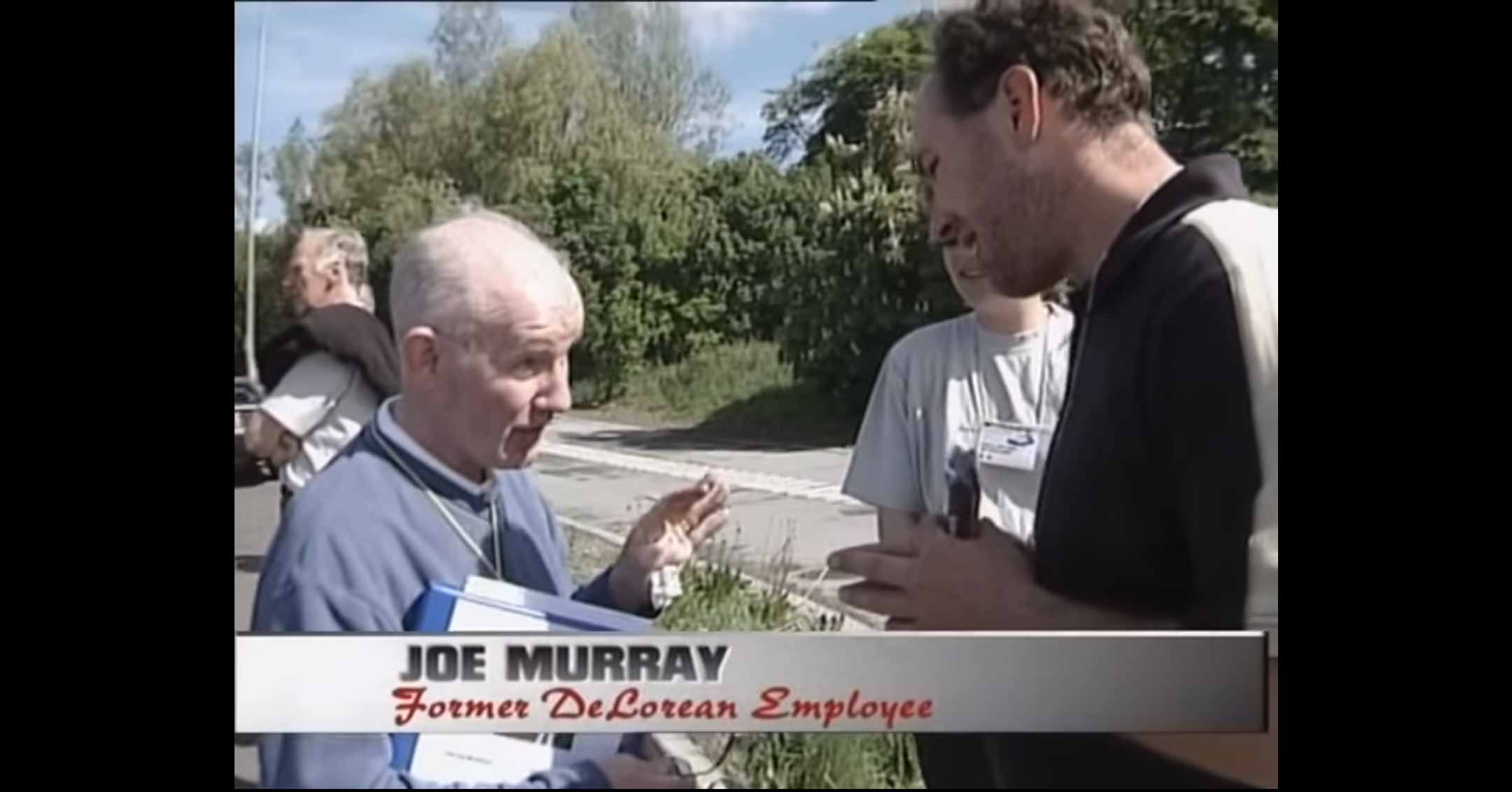
There are many DEALER painted DeLoreans out there, but according to Joe Murray, the person in charge of painting at the DMCL factory (at about 16 minutes, 51 seconds in this video): “There was never, never ever, a DeLorean motor car painted in this factory. Anything that was painted in this factory, I painted. And there wasn’t any cars, wasn’t a DeLorean car painted. Every car that left here was stainless steel.”
90 Degree Fuel Filter Fitting
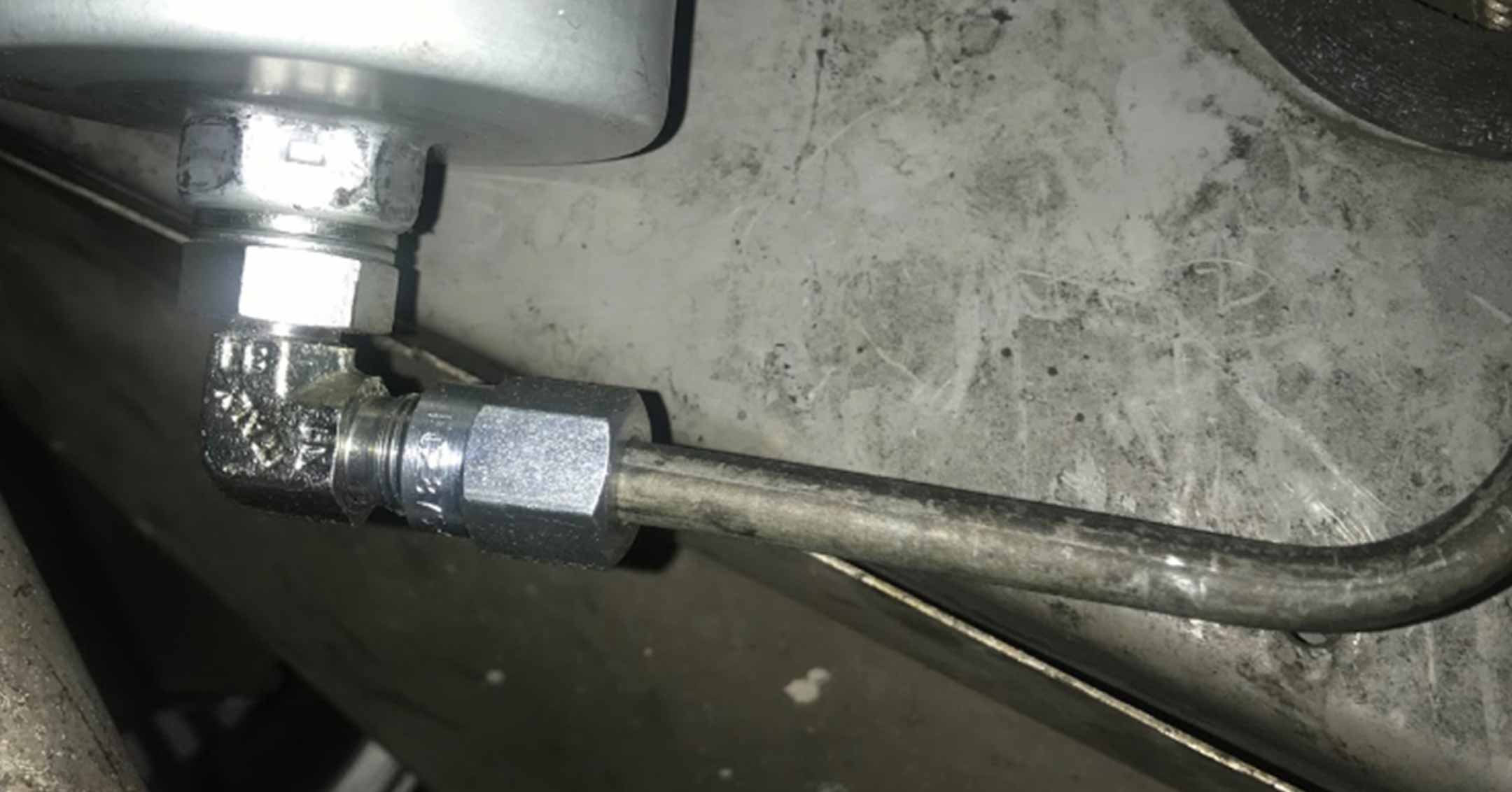
by Ryan Foster (VIN #06668) Have you installed a new fuel filter, just to start up the DeLorean and see fuel pouring out from the filter that you just installed? Well, that stock 90-degree fitting is usually the culprit. I recently experienced this problem myself. When I was installing the new fuel filter, I cranked on the compression fitting, and for the life of me could not get the hard line that goes into the filter to stop leaking. So, I got in contact with Josh at Delorean Performance industries (DPI) and he told me he had an updated 90-degree fitting that can be reused, and doesn’t need to be so tight. I ordered it right away. The kit comes with a new fuel filter, the elbow and copper washers needed to install. Part number 100523K. Below is a pic of the new elbow installed. The kit is very easy to install. Just install the elbow to the filter. No thread sealer needed. Install it dry. You’ll need a small tubing cutter (picked up at a local hardware store) to cut the end of the hard-line off as close to the end as possible. WARNING: Do not use a grinder or a cut off wheel as you will create heat and sparks and there is fuel in the line. The old elbow off the car looks like this: You can see how much of the line had to be removed to get the compression fitting off. The new elbow is reusable, and if you need a new compression fitting, DPI sells those too. Job takes about 45 mins tops using basic tools.
DeLorean Owners Manual Disambiguation
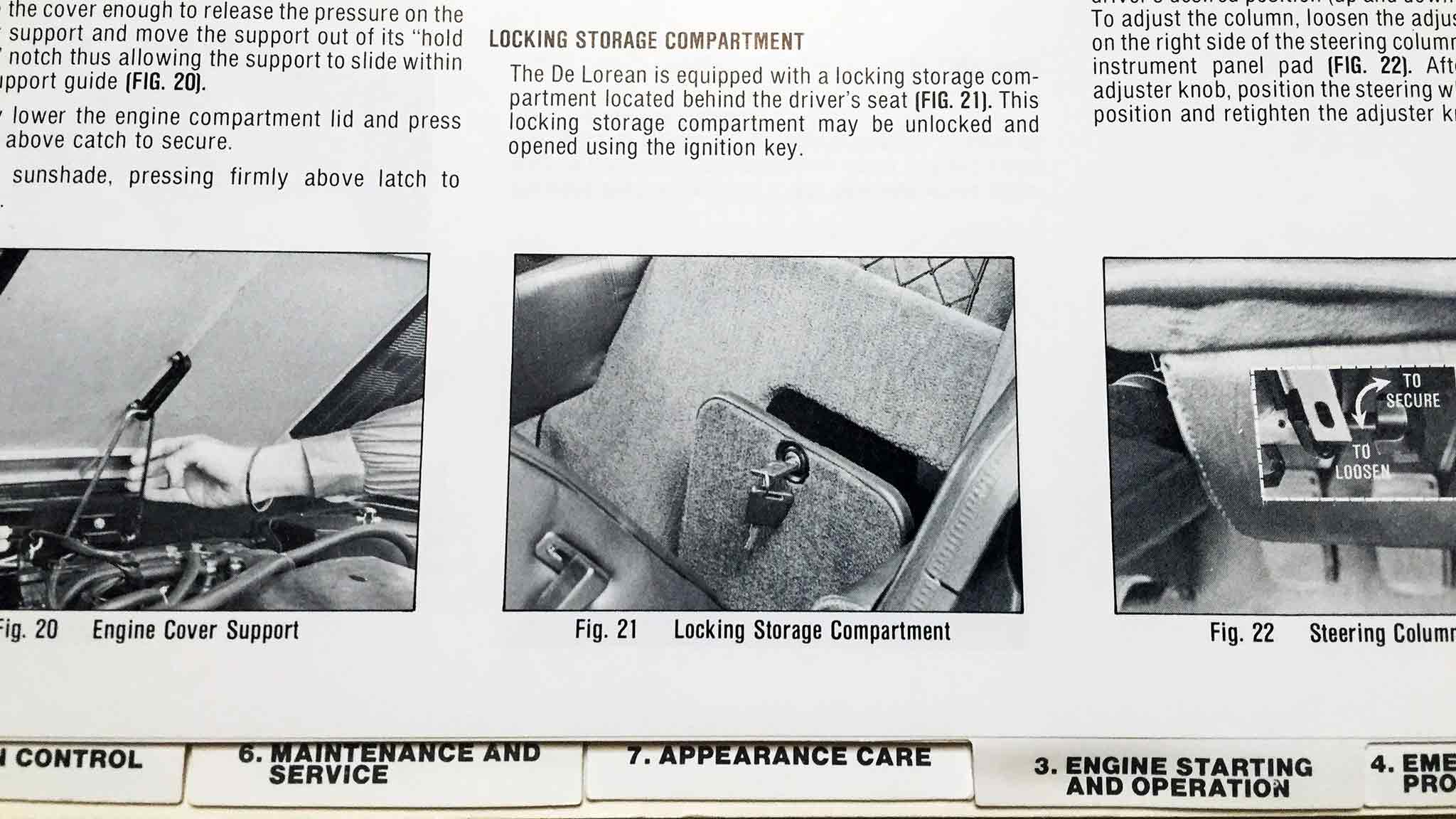
by Chris Miles Did you get an owners manual with your DeLorean when you bought it? Did you know the owners manual is unique to the model year? There are actually three different versions of the owner’s manual (or Handbook). For 1981 models, DMC called it the “Owners Manual.” For the 1982 and 1983 model years, they called it the “Owners Handbook”, even though they all contained the same information. All 1981 model cars were supposed to ship with spiral bound owners manual. It featured black and white photographs documenting various parts of the car. The manual came in a pouch style valet case along with other documentation. When the 1982 cars rolled out, DMC had “cheapened” the manual by going to the booklet format, with simple line drawings, and calling it the “owner’s handbook”. It had a black cover with a graphic of the car and had beige accented pages. It came in a padded gatefold style valet case. These are reportedly harder to find as they did not produce as many. For the 1983 cars, there was a further simplification of the handbook. Now, there was no black outer cover and all pages were black and white. The next time you’re in your glove box, go check to see what version of the owners manual/handbook you have. If you don’t have one, DMC now offers a reproduction 1982/1983 style owners manual with a 1981 style valet case – or you can watch eBay for the original DeLorean owners manuals. All three types usually come up for sale. The spiral bound versions usually command a high price these days. Then there’s always the digital versions available around the web. 1981 1982 1983
What?! My Battery is Dead?!
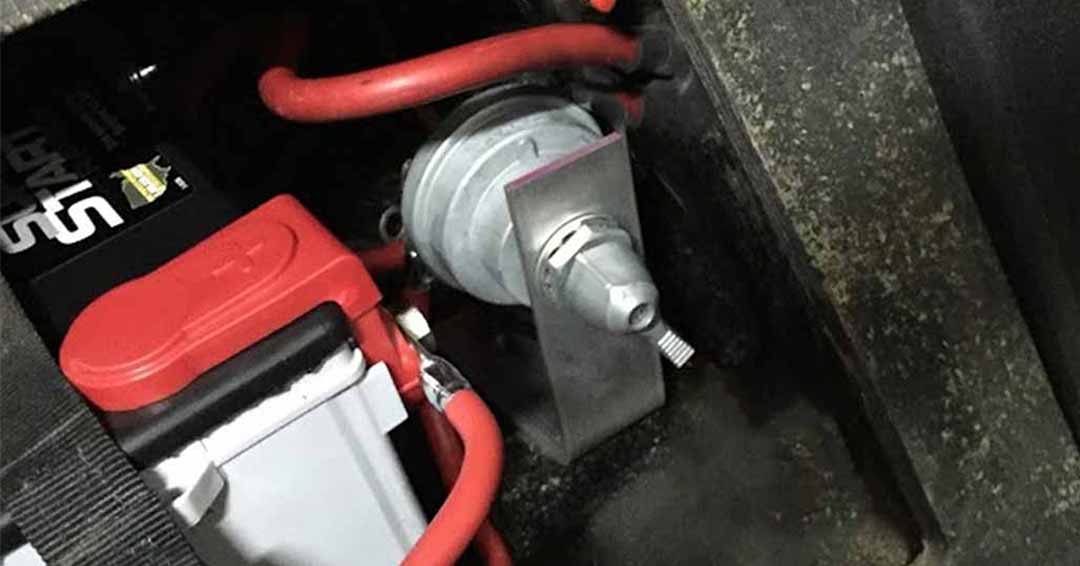
by Chris Miles Many DeLoreans suffer from vampiric battery drain if the car is parked for too long. How many times have you wanted to take the DeLorean out for a drive, just to turn the key and find out your battery is dead? The battery cut off switch is not a new idea. However, some of us probably have an inexpensive switch that we just live with. Others don’t have one at all. While it’s best to make sure you don’t have some underlying issue, a battery cut off switch will prevent your battery from draining if you do not operate your car regularly. Especially for owners who store their cars in the winter, a battery cut of switch is almost a must. It’s also a convenient way to disconnect the battery whenever you want to work on the car. I never like messing with the battery cables if I don’t have to. With a battery cut off switch it may also eliminate the need to have your car on a trickle charger. The Pollak Master Disconnect Switch is my favorite, as it’s a very heavy duty battery cut off switch that outperforms your run of the mill switch from Harbor Freight, or your favorite discount auto parts store. Pollak has been manufacturing these switches for many, many years. Over the span of production they have been made in the USA, Mexico, India, and most recently Taiwan. If you watch eBay, you can usually find New Old Stock USA made Pollak switches. Just beware of the cheaper Chinese knockoffs, as they do not have the Pollak stamp on them. Over the years many people have installed these switches by drilling a hole through the battery access door. I am not the biggest fan of doing this because I don’t want to damage the original battery cover. Or, the switch could rub or dig into the back of the passenger seat, which is more costly to repair/replace. I prefer to make a bracket to mount the switch inside the battery cubby. You will also need to buy one 2 foot battery cable to run between the battery and the switch. You can pick one of these up at your favorite auto parts stores, or on Amazon or from O’Reilly Auto Parts. For installation, I connect the positive battery cable to one stud on the switch. I then run the new 2 foot battery cable to the other stud.
To LoJack, or Not to LoJack…
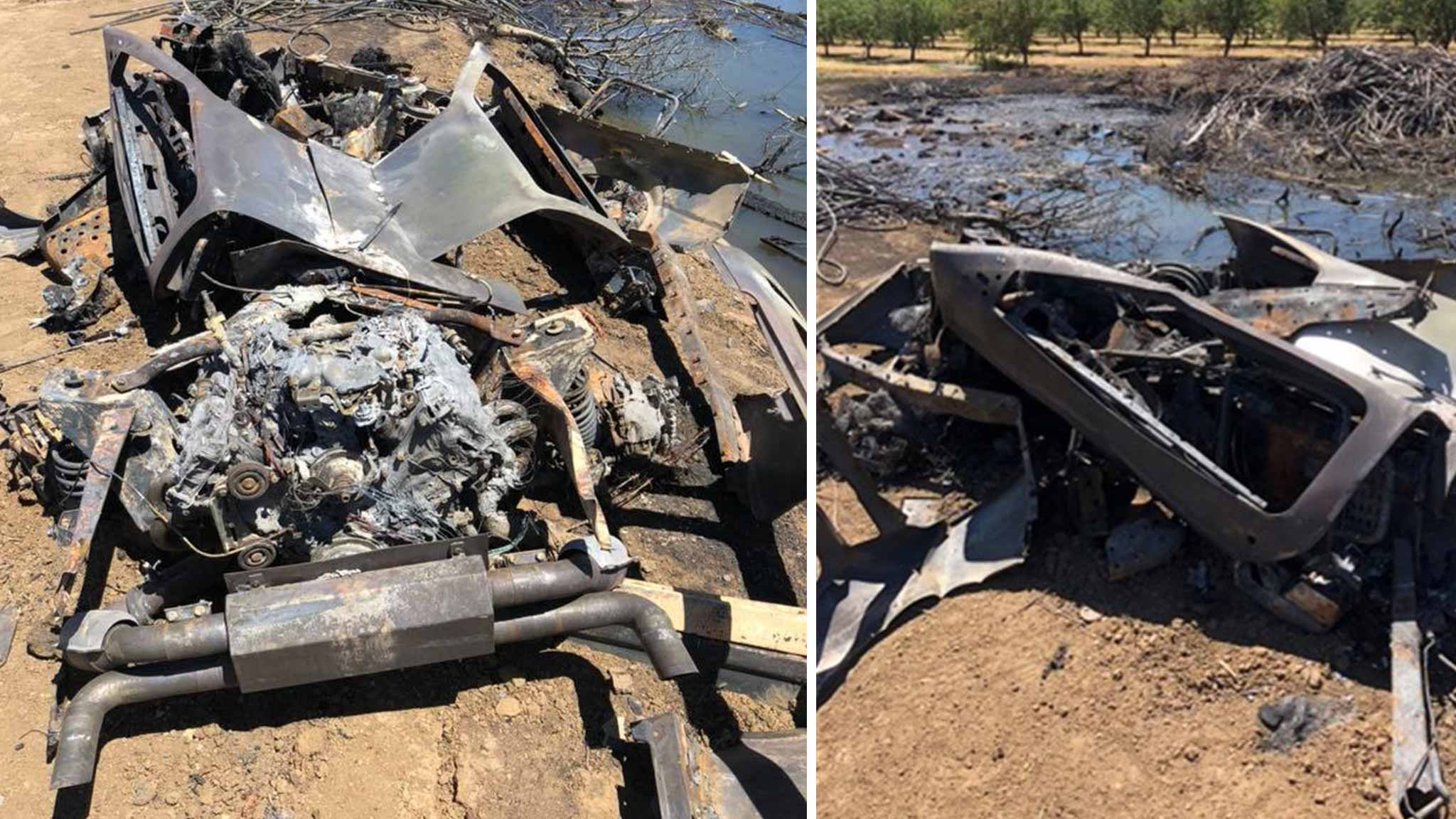
We all know that DeLoreans aren’t stolen… well… ever (statistically.) But as we recently saw with Mike Persyn’s truck being stolen, while towing VIN #05984, it can happen. And with only about 4,000 DeLoreans left in the world, the question is, should we consider installing tracking devices on our cars? Which is quickly followed up with, ‘Is it worth the money?’; ‘What devices should I consider?’; ‘What will it cost me over time?’ After looking at a lot of vehicle tracking devices and options, the short answer seems to be: LoJack. Q&A? Below is an email from June 5, 2018 directly from LoJack with details. (View the PDF of the email)


